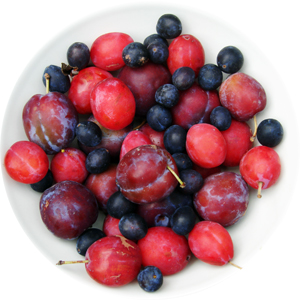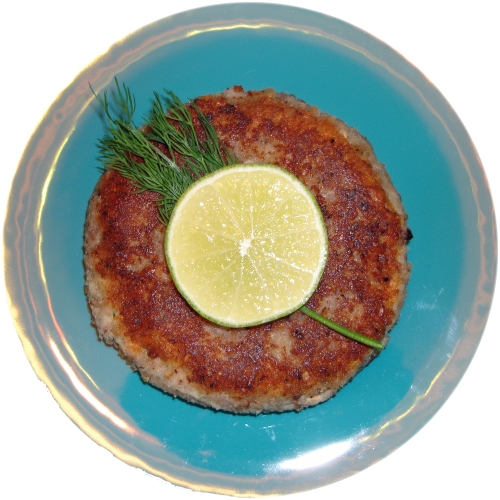Can there be a more beautiful sight in early autumn than a bowl full of juicy ripe plums [no sniggering at the back there!]? Red and purple as a sky bruised by sunset, a fine dusty must misting their taut skins. As the evenings begin to close in around you like the cardigans now emerging from the cupboards these beauties are crying out for a crumble made with warming wintry spice and, in this case, a hint of toffee and vanilla. This recipe is actually the offspring of the marriage of several others and combines the tart with the sweet – the final balance of the two being up to you and your tastes to decide. Regular readers will know that when cooking I often reach for the bottle, and this is no exception including as it does both damson or sloe gin and toffee vodka, but the alcohol here will all cook away so the crumble is quite safe for drivers, children and anyone following the twelve step programme.
For a crumble big enough for four, or six if you’ve already eaten well:
- 250g damsons
- 750g plums – you can mix varieties and degrees of ripeness
- 150ml damson or sloe gin
- 1 or 2 tbsps toffee vodka
- 3 cloves
- 2 cinnamon sticks
- 50g butter
- 2 tbsps golden syrup
- ½ a vanilla pod, split down the middle
- Caster sugar to taste, probably no more than 4 or 5 tbsps in total
For the crumble topping:
- 190g plain flour
- 100g caster sugar
- 120g butter
- The zest of a small orange
Start by preparing the damsons. I have seen recipes which ask you to stone the damsons first, but life is frankly too short, so rinse the fruit and place whole into a pan with your chosen gin, the cloves, and a cinnamon stick. Bring to the boil and simmer for around 15 minutes. Take off the heat and taste, adding sugar to taste but remembering that this should be the tart component of your pudding. When cool fish out the cloves and cinnamon, then you can either pick out the now obvious stones from the damson pulp, or pass the whole lot through a fine sieve.
Next come the plums, which should be de-stoned and quartered. Heat the butter in a heavy bottomed pan and when foaming tip in the plums. Add the golden syrup, the toffee vodka, the other cinnamon stick and the vanilla pod and allow to bubble merrily away for five to ten minutes so that the plums begin to break down, but don’t collapse completely. Taste again for sweetness and add sugar if needed, but with the golden syrup in there you may not need any – much will depend on the sweetness of your plums. Remove from the heat and allow to cool before removing the cinnamon and vanilla. Add the damson puree and combine the two then give a final taste to check the overall balance of tart to sweet – not sweet enough, add more sugar, not tart enough, a squeeze of lemon juice.
To make the topping mix the flour and sugar with the grated orange zest, then cut the butter into cubes and rub into the flour and sugar mix with the tips of your fingers until the mixture resembles fine breadcrumbs. Pile this onto your fruity base. Place the dish on a tray [there is likely to be some spillage] and bake in a 200˚C oven for 25 to 30 minutes. The top should be golden and crunchy – a quick flash under a hot grill may help to finish it off – with slight eruptions of sticky sauce from within. My last attempt, made around the time of the Christchurch earthquake, and possibly in sympathy with it, experienced a little more seismic activity from beneath the crust than the ideal, but such is the way of crumbles. I was going to serve this with some homemade custard but there was a rare outbreak of clotted cream in the local store, so the custard recipe will have to wait for another day.
[recipe entered in the ‘Simple and In Season’ event over at Fablicious Food!]


